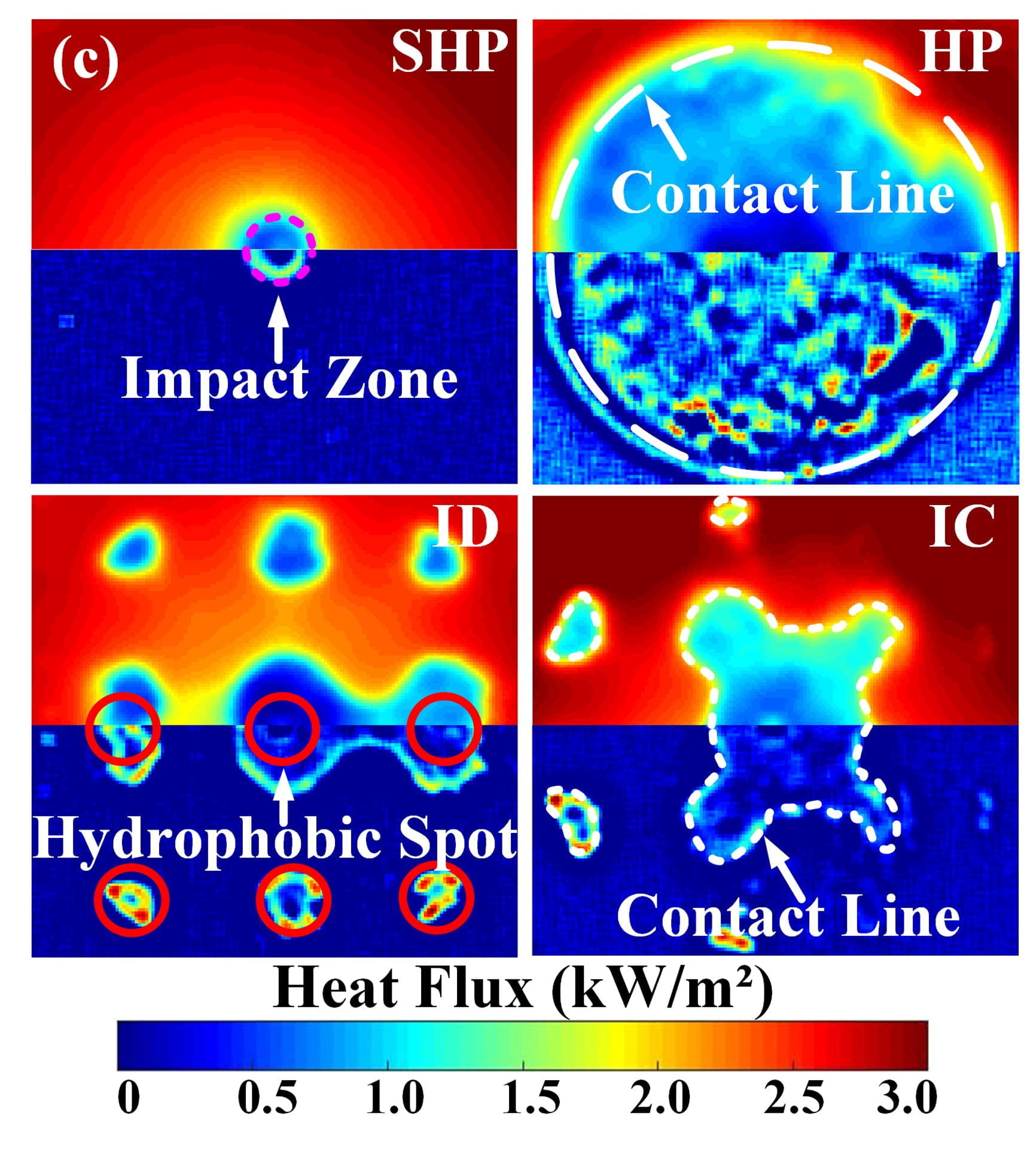Impact wettability-patterned surface (PF)

This paper reports the dynamic wetting behavior and heat transfer characteristics for impinging droplets on heated bi-phobic surfaces (superhydrophobic matrix with hydrophobic spots). A non-patterned superhydrophobic and a sticky hydrophobic surface acted as control wettability surfaces. As expected, differences in wetting and heat transfer dynamics were noticeable for all surfaces with the most pronounced variation during the receding phase. During spreading, inertia from the impact dominated the droplet dynamics, and heat transfer was dominated by convection at the contact line and internal flow. As contact line velocities decreased over time, evaporative cooling at the contact line gained importance, especially for the bi-phobic surfaces, where liquid remained trapped on the hydrophobic spots during receding. These satellite droplets increased the contact area and contact line length and assisted heat transfer and substrate cooling after lift-off of the main droplet. Compared with the hydrophobic surface, the contribution of the contact line heat transfer increased by 17%–27% on the bi-phobic surfaces depending on the location of impact relative to the hydrophobic spots. Nonetheless, the bi-phobic surfaces had a lower total thermal energy transfer. However, compared with the plain superhydrophobic surface, heat transfer was enhanced by 33%–46% by patterning the surface. Depending on the application, a trade-off exists between the different surfaces: the sticky hydrophobic surface provides the best cooling efficiency yet is prone to flooding, whereas the superhydrophobic surface repels the liquid but has poor cooling efficiency. The bi-phobic surfaces provide a middle path with reasonable cooling effectiveness and low flooding probability.